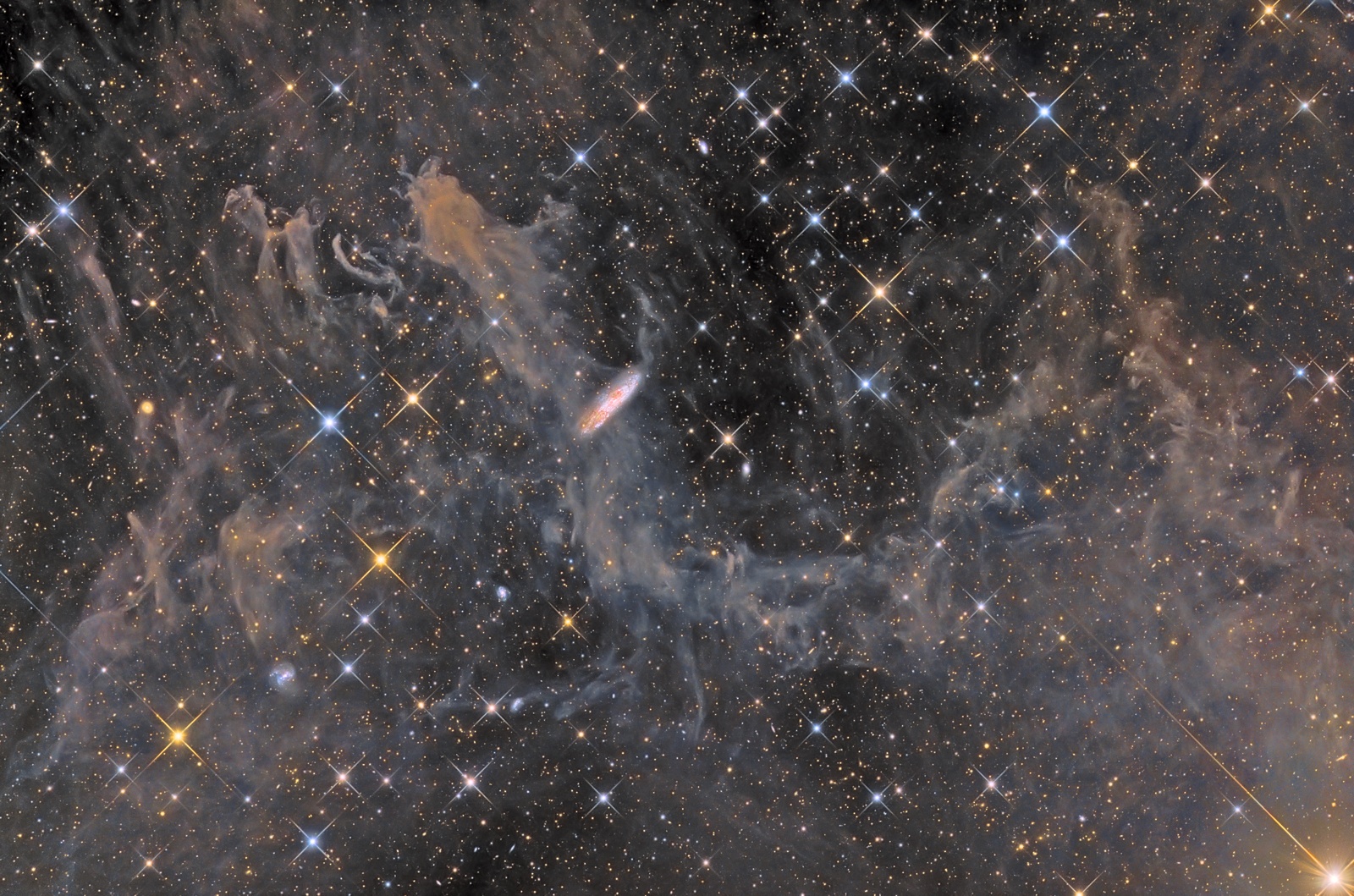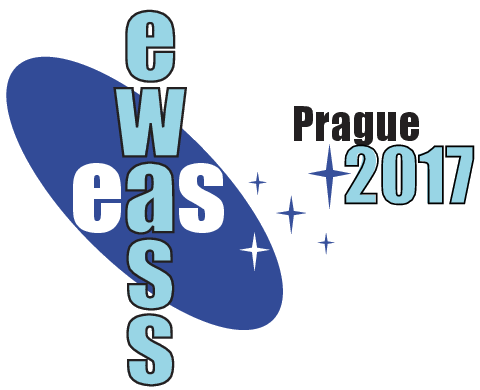Special Session SS12
28 June 2017
Dust across the Universe
Aims and scope
 Dust grains have a crucial role in understanding the history of structure formation and evolution. The amount of dust in galaxies has strong implications for star formation, the transition from high to low mass stellar generations (PopIII/II), as well as for the formation of the first black holes in the early Universe. In addition, dust extinction affects the detectability of high redshift galaxies in the rest-frame UV/optical bands, obscuring star forming regions and active nuclei, thus affecting the galaxy number counts, UV luminosity functions and beta slopes. Additionally, dust is an important tracer of gas mass and star formation rate for young galaxies.
Dust grains have a crucial role in understanding the history of structure formation and evolution. The amount of dust in galaxies has strong implications for star formation, the transition from high to low mass stellar generations (PopIII/II), as well as for the formation of the first black holes in the early Universe. In addition, dust extinction affects the detectability of high redshift galaxies in the rest-frame UV/optical bands, obscuring star forming regions and active nuclei, thus affecting the galaxy number counts, UV luminosity functions and beta slopes. Additionally, dust is an important tracer of gas mass and star formation rate for young galaxies.
Dusty systems are commonly observed up to z~7 thanks to dust thermal emission at mm-FIR wavelengths. Observations suggest that all the dust properties, such as mass, composition, dust-to-stellar/gas mass ratio and grain size distribution may vary with cosmic epochs and/or galaxy type, implying either alternative dust formation mechanisms/sites at different redshifts and/or a redshift evolution of the emitting dust properties (grain size distribution, optical properties and composition). On the other hand, dust masses similar to that of our Milky Way are observed already at z~6, in both normal galaxies and quasars. The origin of such early dusty objects is still matter of debate. All these observations underline how dust formation and evolution may be a complex process, strongly related to the star formation history (SFH) and of the interstellar medium (ISM) properties.
The sources of interstellar dust are still a controversial issue. The role of early supernovae (SNe) dust production and of asymptotic giant branch (AGB) stars is still matter of intense debate. Furthermore, an increasing number of studies agree on the need for an additional (dominant) contribution, the grain growth in molecular clouds, to explain the dust content of both local and early times systems. However, the feasibility and efficiency of the accretion of heavy elements onto dust grains has been recently put into question, renewing the interest of the scientific community in exploring the origin of dust, at low and high redshifts.
Despite the wide knowledge acquired so far, we are still far from explaining dust formation, evolution and chemical composition, especially at high redshift. Multi-wavelength observations of the Milky Way and nearby galaxies provide most detailed information about cosmic dust properties used as the reference for extragalactic studies. In particular, observations in the X-ray band, in addition to those in the optical/IR/mm, offer a new energy window, where the main constituents of interstellar dust can be studied (e.g. silicates).
Programme
We will cover the following topics:
- The life-cycle of interstellar dust - Observations and theory
- Stellar sources of dust
- Dust survival/modification in the ISM
- Is there a redshift dependence of stellar sources and or formation/reprocessing
mechanisms?
- Dusty galaxies and quasars from z=0 to z~7 - Observations and theory
- How much dust? Methods and uncertainties in dust mass and properties estimates
- Is there a dust/stellar budget crisis?
- Is dust a good proxy for galaxy metallicity and vice-versa?
- What do we really know about dust?
- Chemical composition of interstellar dust
- Optical/IR/mm/X-rays observations as a tool to reveal the interstellar dust properties
Invited speakers
- Hiroyuki Hirashita (Institute of Astronomy and Astrophysics, Academia Sinica)
- Anthony Jones (CNRS, Institut d'Astrophysique Spatiale)
- Roberto Maiolino (Cavendish Laboratory/Kavli Institute for Cosmology, University of Cambridge;)
- Raffaella Schneider (INAF/Observatory of Rome)
Scientific organisers
Elisa Costantini (SRON, Netherlands Institute for Space Research)
Paola Santini (INAF/Observatory of Rome)
Rosa Valiante (INAF/Observatory of Rome) - SOC chair
Svitlana Zhukovska (Max Planck Institute for Astrophysics)
Contact
rosa.valiante @ oa-roma.inaf.it
Updated on Tue Feb 07 14:54:10 CET 2017
|

